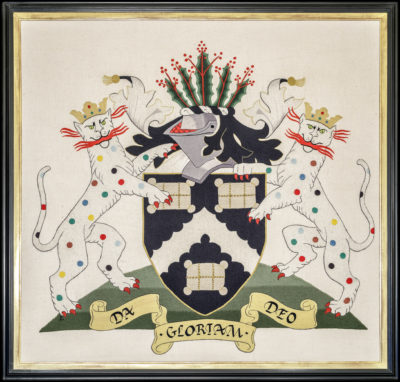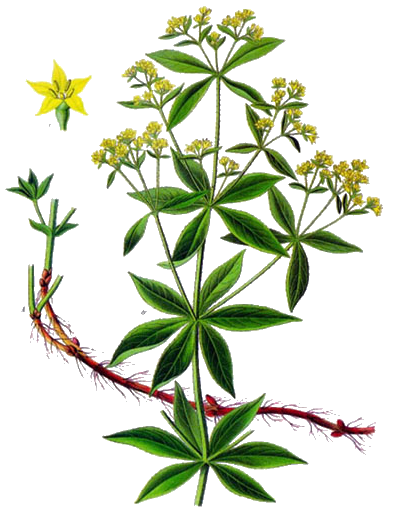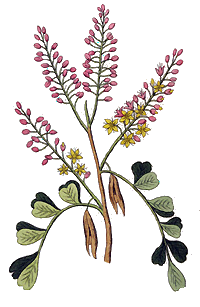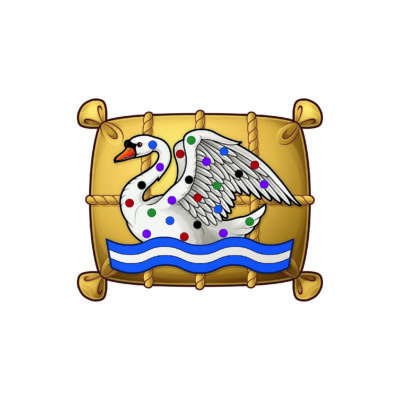The Company
The Arms of the Company
The terms “coat of arms” relates to the design placed on a medieval chainmail “surcoat”. This is portrayed as a design on a shield which also includes supporters, a crest, and a motto.
The Dyers’ Arms predate the first records held by the College of Arms (which begin in 1530), but they were confirmed and the Supporters and Crest added in November 1577 by Robert Cooke, Clarenceux King of Arms. The emblazonment is:
Arms | Sable, a chevron engrailed Argent, between three bags of madder of the last, corded Or.
Crest | On a wreath of the colours, three sprigs of a graintree erect Vert, fructed Gules.
Supporters | Two panthers incensed rampant guardant Argent, spotted various colours, fire issuing form their ears and mouth proper, both ducally crowned Or.
Motto | Da Gloriam Deo (Give Glory to God).
Full description of the coat of arms
The madder plant is native to Asia and the eastern Mediterranean, and in the 18th century was also cultivated in England. The dried and ground root produces a red dye, and the uniforms of British Redcoats were dyed with it.
The graintree is the habitat of the Kermes beetle which, when dried and ground to a fine powder, produces a superior crimson dye. In Medieval times this was described as a ‘grain colour’, referring to fastness of the dye (also connected with ‘ingrained’), and the tree on which the beetle was found was therefore named the ‘grain tree’.
The supporters are sometimes referred to as leopards, but this is incorrect as heraldic panthers have coloured spots, whereas heraldic leopards have none. The heraldic panther is always depicted with flames coming from its mouth and ears; this is termed the “Panther Incensed”. The flames represent the sweet odour said to be emitted by the panther. The Panthers, which were added to the arms a century after the charter was granted, may have been chosen as supporters because of the Royal connection, but also because of the coloured spots.
King Henry VI, who granted the Dyers’ Charter, used the panther for his badge, to indicate that “a Kinge should have so many excellent and severall vertues as there are diversities of spottes and most beautifull Coullors in this Beast, and then his People will love and followe him for his vertues as all other Beastes love and follow the Panther for his sweete smell and glorious coullors” (Coll. Arms MS. L. 14, pt 2, f. 380).
In 2021, as part of the celebrations for the 550th anniversary of the Royal Charter granted in 1471, a new heraldic badge was commissioned for the Company from the College of Arms.



